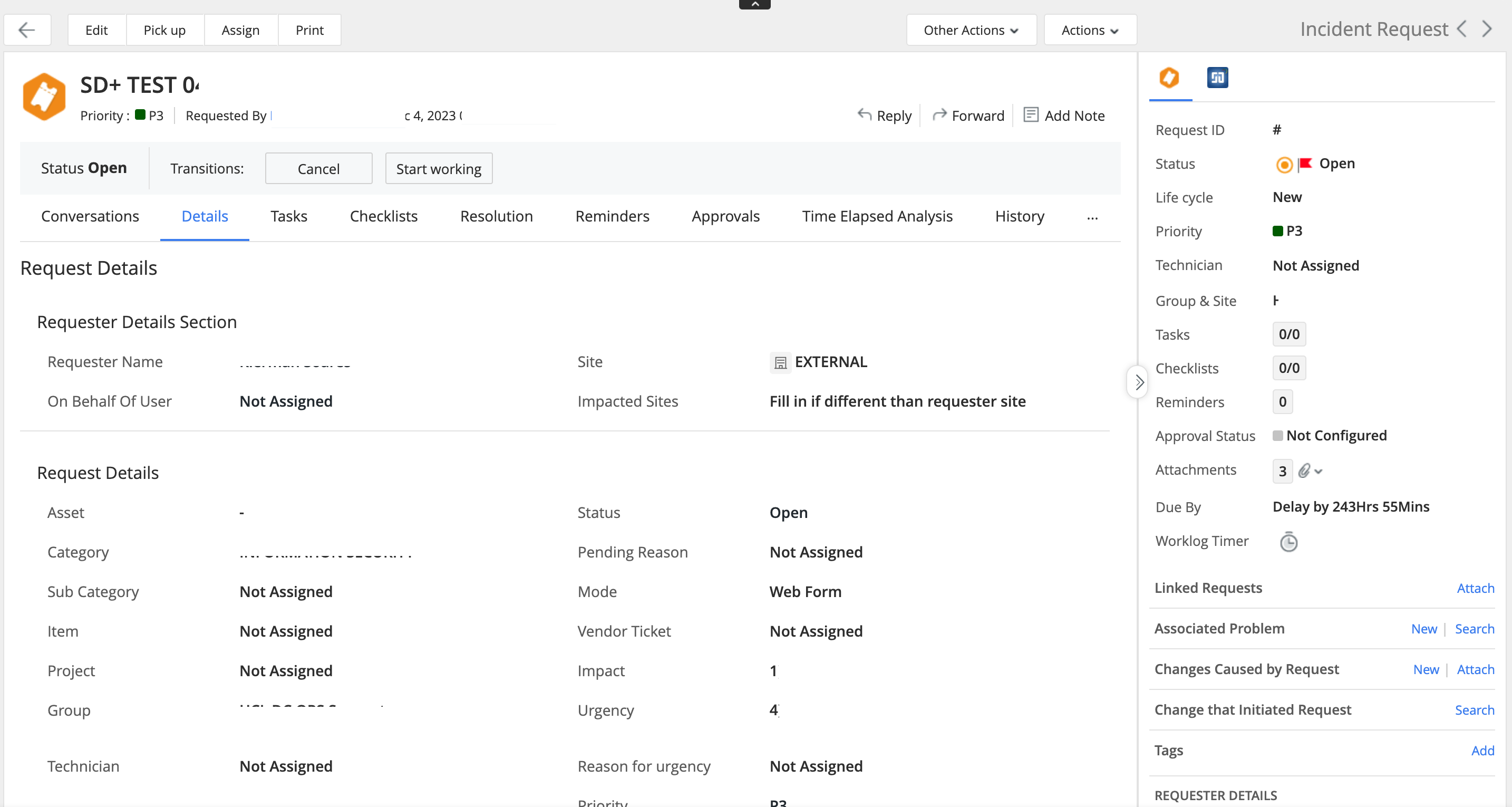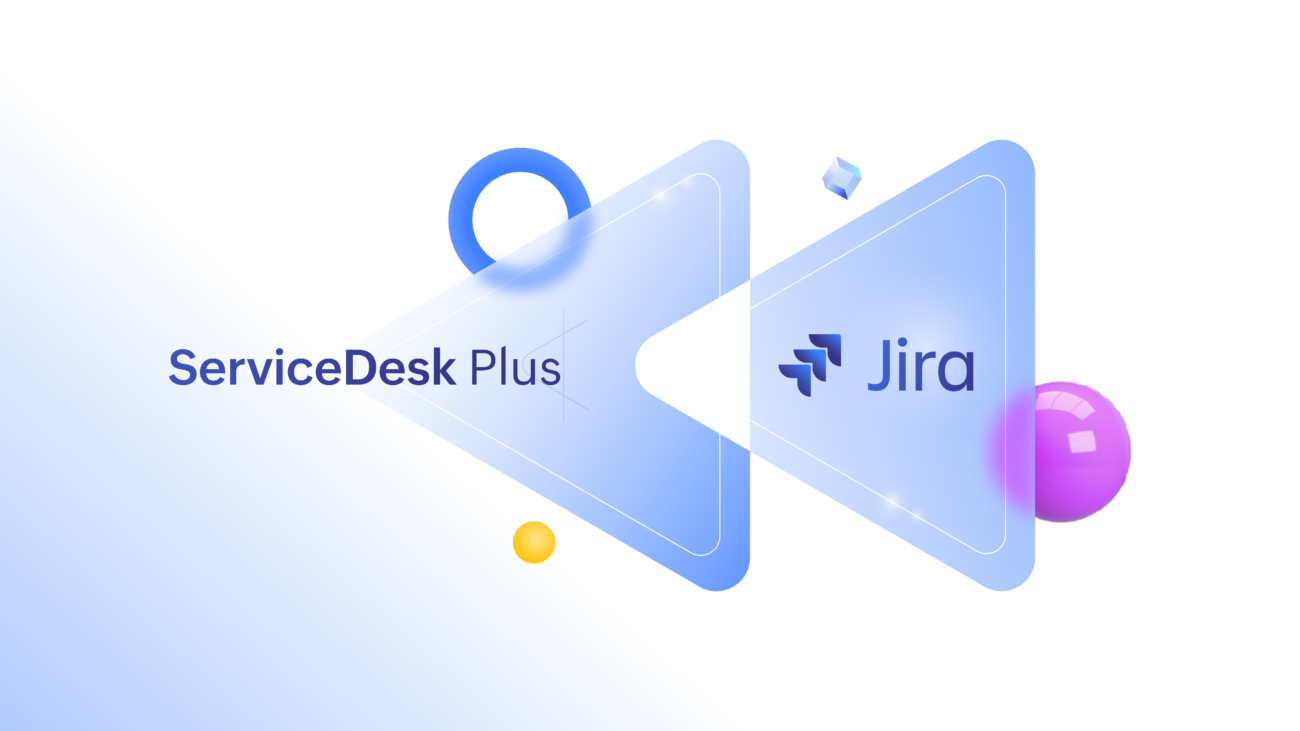If you’ve ever felt the overwhelming crunch of support tickets and dealt with project management chaos, you’re not alone. As someone who’s been in the trenches of IT support, I get the struggle.
That’s why I’m excited to share my experience on ServiceDesk Plus Jira integration, which made my IT life a lot simpler. Imagine a world where you can manage incidents and track projects without shifting between applications and still get the desired data at your fingertips.
In this blog post, we’ll discuss why you need a ServiceDesk Plus Jira integration and some practical insights and strategies I used to integrate ServiceDesk Plus and Jira.
Why Integrate ServiceDesk Plus and Jira?
ServiceDesk is a comprehensive IT service management (ITSM) solution designed to automate and streamline support and help desk operations.
Developed by ManageEngine, it offers features like incident management, change management, problem management, etc.
Jira, created by Atlassian, is a powerful project management and bug-tracking tool widely used in software development and other industries. Known for its flexibility, Jira enables teams to track, plan, and manage their work efficiently through customizable workflows, agile boards, and much more.
Working with integration experts over a couple of years, I have noticed the following benefits of a ServiceDesk Plus Jira integration:
- With integrated systems, your organization can gain a holistic view of projects and service operations, leading to increased team transparency, better decision-making, and improved overall visibility.
- Integration facilitates real-time communication between your support and development teams, breaking down silos, enabling everyone to align with business goals.
- Integration enables information to flow swiftly and accurately between service requests and development tasks, leading to quicker incident resolution and a more responsive support system. This, in turn, increases your operational efficiency.
- Integrated systems work as a catalyst for enhanced customer satisfaction. As customer incidents move quickly and automatically through their lifecycle, teams experience a single source of truth within their tools. Think of streamlined help desk management.
Yet, we tech enthusiasts understand the hurdles associated with building an integration from the ground up. We know that constructing a ServiceDesk Plus-Jira integration isn’t always practical and budget-friendly for companies.
Thankfully, many leading software vendors in the market acknowledge this challenge and provide robust support for integrating their systems with third-party apps. Likely so, there is a native way to integrate Jira and ServiceDesk Plus.
Overview of Jira ServiceDesk Plus Integration Options
Native Integration
The out-of-the-box or native functionality allows for a one-way synchronization between ServiceDesk Plus and Jira. Incidents coming into ServiceDesk automatically trigger Jira issues with a specific issue type for the dev team to work on.
I have seen this use case frequently where companies want their external customer-facing teams to exchange information with the internal dev team.
You can also associate Jira issues with ServiceDesk Plus incidents or service requests. After that, you can track these linked requests and Jira issues updates in either application.
So, what’s the hitch here?
The native functionality allows for one-way communication only. For establishing an ongoing bi-directional sync, you require a bit more configuration. Enter third-party integration apps!
Why are they better? We’ll see.
Third-party Apps for a Jira ServiceDesk Plus Integration
At this stage, I want to share my insights with you. They are based on my experience working with an EU-based MSP, let’s call it Orella Solutions Inc. They offer security monitoring and reporting services aimed at automating the transfer of tickets from Jira Cloud to their customers’ ITSM platforms. Among these platforms was ServiceDesk Plus.
They were looking at third-party apps to integrate between their Jira cloud and their customer’s ServiceDesk Plus instance. While their diverse clientele used different ITSM platforms such as ServiceNow, TopDesk, and JSM, we’ll focus on detailing the Jira Cloud ServiceDesk integration in this segment, with similar approaches applied to the other integrations.
We’ll delve into the specifics of their use case in a while. In the meantime, let’s explore the process that led them to select their integration tool.
They tried two integration services but both weren’t successful to accommodate their requirements.
The third one was Exalate. Exalate offers uni or bi-directional continuous, real-time, robust integration between multiple platforms like Jira, Salesforce, Zendesk, ServiceNow, etc.
They wanted to set up their integration faster and be offloaded to an integration service provider for a better and enhanced service experience. Over time, I have seen customers asking for integration tools that offer scalability and customization to a granular level without having to work on either of them.
This was one of the reasons for choosing Exalate.
Let’s look at a few other reasons.
- Exalate offers natural scalability for enterprises looking to connect with multiple partners, vendors, customers, or suppliers. A point-to-point connection you have with a single partner can easily scale up to multiple point-to-point networks.
- Its integration as a service offering allows users to customize plans and services based on specific requirements. The result is an integration implemented end-to-end.
- It is ISO 27001:2002 certified.
- Exalate is capable of connecting to diverse company networks. To elaborate, Exalate for peer-to-peer integration connects one application to a single other application, say, integrating Jira and Salesforce. Exalate for MSPs connects a single central instance (company) with multiple other internal or external customers, each one using different applications.
- It offers single-tenancy, distributed architecture, JWT-based authentication, and much more, so your integration will always behave as expected. This is especially true in light of cross-company integrations, where integration security is as important as integrating the systems in the first place.
It’s time we discussed their use case and shared the obstacles they faced and the ways we adopted to tackle them.
ServiceDesk Plus Jira Integration Use Case
A brief flashback: We’re discussing an MSP (let’s refer to them as Orella Solutions) use case where they wanted to integrate their dev app (Jira Cloud) with their customer applications, one of which was ServiceDesk Plus.
Whenever Orella sought to integrate with their customer apps, they encountered challenges dealing with diverse data formats, deployment models, and varied workflows. The manual data exchange through chats, emails, or phone calls became frustrating. Additionally, keeping track of incidents using their MSP portal posed increasing difficulties.
Handling scalability became a concern as new customers entered the scene.
They grappled with operational inefficiencies and customer retention challenges, reaching a point of no return.
They got in touch with our support team around this time. I listened patiently to their struggles and after a few email exchanges, I assured them that we would handle their integration end-to-end. This included configuring their connections with low-code scripting functions, embedding advanced logic into their sync flows, transforming data from one format to another, and even orchestrating end-to-end business workflows.
Then we began the process of collecting their integration specifications.
The requirements were outlined as follows:
- Establish a straightforward incident sync with basic field mappings covering summaries, descriptions, comments, attachments, and labels
- Ensure status mapping at both ends, keeping both Orella and their customers well-informed about the incident’s current position in the workflow. The synchronization ceased when both parties closed the ticket.
- Uphold the confidentiality of private conversations, preventing internal comments from being externally visible.
- Synchronize historical data as part of the integration process.

The trigger for automatic information exchange from Jira to ServiceDesk Plus was based on the following conditions:
project = ITSM AND issueType = “incident” AND category = “MDR” and status = “Waiting for customer”

We got to the task at hand.
| Exalate is a competitive advantage for us as an MSSP since it enables us to have a close and smooth collaboration with our customers and find workaround bottlenecks. That is something both sides appreciate a lot because we are not merely another partner to our customers but are in fact an extension of their team. And that is NVISO’s strategic vision as a managed security services provider. |
How to Implement a ServiceDesk Plus Jira Integration?
We took the following steps to implement Orella’s ServiceDesk Plus Jira integration:
- Gather the use case requirements.
- Install Exalate on ServiceDesk Plus and Jira.
- Create a connection between ServiceDesk Plus and Jira. A connection works as a secure channel of information exchange between the two Exalate nodes on Jira and ServiceDesk Plus. We created numerous connections for their different projects.
- Adjust the sync rules to map the data fields between the two applications. The Rules tab within the Exalate console handles this mapping. Each side has an independent outgoing and incoming sync. The outgoing sync decides what information is sent to the destination, whereas the incoming sync decides how to interpret information coming from the destination. So, the outgoing sync from Orella’s Jira instance was mapped to the incoming sync of their customer’s ServiceDesk Plus instance.
- Configure triggers for automatic information exchange. We already know the conditions for transferring information from Jira to ServiceDesk Plus. It was a unidirectional sync. I created the triggers in the platform-native query language (JQL for Jira). You can create multiple triggers with granular control on both sides independently.
- That’s it! After setting the sync rules and triggers, synchronization happened automatically.
The Post Narrative
We still configure new integration requirements, provide ongoing support, offer enhanced services, and handle any other issues with Orella when required.
The Exalate for MSPs plan enabled Orella Solutions to act as a central hub through which data flowed unidirectionally toward the endpoints, namely their customers.

They could successfully integrate with their customers and sync data automatically and accurately based on their requirements.
Having this integration in place helped them provide faster reporting to their customers as they were better informed and were able to take action faster.
Exalate’s integration-as-a-service offering further boosted Orella’s scalability, and adding additional customers to their network was just a phone call away.
Conclusion
Integrating Jira and ServiceDesk Plus can significantly enhance your organization’s efficiency, transparency, and customer satisfaction. The native integration provides a foundation, but for a more dynamic and customizable solution, third-party apps like Exalate offer unparalleled advantages.
In the ever-evolving landscape of IT service management, a robust integration solution is not just a convenience; it’s a strategic necessity. Consider talking to our experts if you want a transformative impact on your MSP operations.




